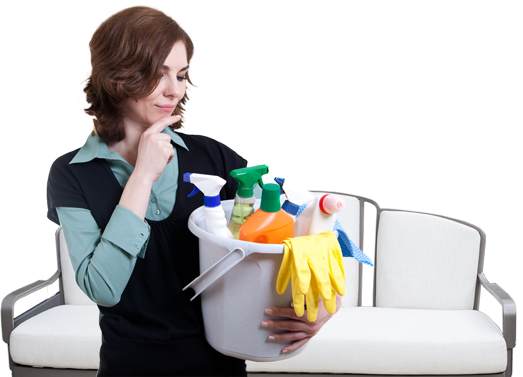Creating Healthy Spaces: The Significance of Air Quality in Our Daily Lives
Posted on 23/08/2025
Creating Healthy Spaces: The Significance of Air Quality in Our Daily Lives
Air quality is an essential yet often overlooked component of our overall health and well-being. With people spending close to 90% of their time indoors, maintaining healthy air in our homes, offices, and public spaces is more critical than ever before. Understanding the impact of healthy air and the strategies to improve indoor air quality can pave the way for a healthier and more productive society.
Why Air Quality Matters: The Link to Our Health
The quality of the air we breathe influences almost every aspect of our lives. Poor air is associated with a range of health issues, from minor irritations to severe chronic illnesses. Recognizing the importance of air quality is vital for creating not only comfortable living spaces but also for safeguarding our long-term health.
Main Health Risks Associated with Poor Air Quality
- Respiratory problems: Asthma, bronchitis, and other lung diseases are directly linked to prolonged exposure to bad indoor air.
- Cardiovascular issues: Polluted air increases the risk of heart attacks and hypertension.
- Allergic reactions: Dust, pet dander, and mold spores cause allergies and worsen symptoms in sensitive individuals.
- Weakened immunity: Long-term exposure to pollutants can reduce the body's defense mechanisms.
- Sleep disturbances: A polluted indoor environment often leads to poor sleep quality.

Indoor vs. Outdoor Air Quality: What's the Difference?
Many people assume that air pollution is primarily an outdoor problem. While outdoor air pollutants--like smog and vehicle emissions--are significant, indoor air can actually be up to five times more polluted than outdoor air, according to the Environmental Protection Agency (EPA).
- Outdoor air: Influenced largely by traffic, industry, natural events, and urban density.
- Indoor air: Affected by building materials, household products, inadequate ventilation, and occupants' behaviors.
Because we spend so much time indoors, improving the air inside is crucial for protecting ourselves and our families.
Common Sources of Indoor Air Pollution
To effectively address air quality issues in your living or working space, it is important to identify the most common pollutants and their sources:
- Volatile Organic Compounds (VOCs): Released from paints, cleaning products, adhesives, and air fresheners.
- Particulate Matter (PM): Dust, pet dander, smoke, and pollen that become airborne and accumulate indoors.
- Mold and Mildew: Thrive in damp, poorly ventilated areas and release spores that trigger asthma and allergies.
- Carbon Monoxide: Produced by malfunctioning stoves, heaters, and fireplaces.
- Radon: A naturally occurring radioactive gas that can seep into houses from the ground.
- Biological agents: Bacteria, viruses, and dust mites that can thrive in unclean, damp indoor environments.
How Air Quality Influences Our Daily Lives
Physical Health and Chronic Conditions
Research consistently reveals that prolonged exposure to unhealthy indoor air can lead to an increased risk of chronic respiratory diseases, heart complications, and even certain cancers. Children, the elderly, and people with pre-existing health conditions are particularly vulnerable.
Mental Wellness and Cognitive Performance
Recent studies have started to draw connections between air quality and mental health. Poor air has been linked to fatigue, headaches, impaired concentration, and even mood disorders. Ensuring a clean and healthy environment is crucial for maintaining sharp minds and emotional balance.
Everyday Productivity and Comfort
The benefits of improved indoor air go beyond illness prevention. Clean, fresh indoor air is associated with enhanced focus, greater energy levels, and overall improved mood. Employers are taking note, integrating advanced air purification systems to boost employee productivity and reduce sick days.
Strategies for Creating Healthy Indoor Spaces
Achieving optimal air quality in your everyday life may seem daunting, but there are practical steps that everyone can follow. Here are some proven strategies:
1. Increase Natural Ventilation
- Open windows and doors whenever possible to circulate fresh air.
- Use exhaust fans in kitchens and bathrooms to clear out pollutants.
2. Use Air Purifiers and Filters
- Invest in high-efficiency particulate air (HEPA) filters for your HVAC system or standalone air purifiers to trap allergens and particles.
- Replace filters regularly to maintain maximum efficiency.
3. Monitor Humidity Levels
- Keep humidity between 30% and 50% to prevent mold and dust mites.
- Use dehumidifiers or air conditioners in damp climates.
4. Choose Low-Emission Materials and Products
- Select paints, furniture, and building materials labeled as "low-VOC."
- Use natural or eco-friendly cleaning products to minimize chemical off-gassing.
5. Regular Cleaning and Maintenance
- Vacuum carpets and upholstery with a HEPA-filtered vacuum.
- Wash bedding, curtains, and rugs frequently to reduce dust and allergens.
- Schedule routine HVAC inspections and duct cleaning.
6. Control Indoor Pollutant Sources
- Prohibit smoking indoors entirely.
- Avoid burning candles or incense that release particulates into the air.
- Store chemicals and paints outside of living areas.
7. Integrate Indoor Plants
- Certain plants, such as peace lilies, spider plants, and snake plants, help filter toxins from the indoor air, naturally improving overall air quality.
Technological Advances in Monitoring and Improving Indoor Air Quality
The last decade has seen the emergence of affordable smart sensors and devices that can continuously monitor your air for pollutants, VOCs, temperature, and humidity. This real-time data enables proactive intervention to protect your health, for example by alerting you when it's time to ventilate or change filters.
- Smart Air Quality Monitors: These devices can sync with your smartphone to provide instant readings and tips for improving your air quality.
- Connected HVAC Systems: Modern HVAC systems can integrate sensors and intelligent controls for better air filtration and energy efficiency.
- Automated Air Purifiers: Some purifiers automatically adjust their fan speed and filtration mode based on the sensed air quality.
Creating Healthy Spaces at Work and in Public Buildings
Air quality management isn't limited to homes. Workplaces, schools, and government buildings are increasingly prioritizing clean indoor environments to protect public health and enhance wellbeing.
- Green building certifications, like LEED and WELL, assess indoor environmental quality and promote designs that minimize airborne pollutants.
- Adoption of advanced ventilation, filtration, and real-time monitoring systems are becoming standard in modern offices and public spaces.
- Education campaigns in schools and workplaces help occupants understand their role in maintaining better air.
Encouraging building-wide policies--such as no-smoking rules and regular HVAC maintenance--creates a culture where air quality is viewed as a shared responsibility.

Future Challenges and Opportunities in Air Quality Management
As urbanization continues and buildings become more energy-efficient, the risk of "tight" buildings trapping pollutants increases. At the same time, greater awareness, advances in smart technology, and increased public pressure are pushing industries and governments to set higher standards for air cleanliness in our daily lives.
- Regulations: Expect new guidelines demanding better indoor air standards.
- Innovation: The next generation of smart, eco-friendly building materials and home appliances is expected to further reduce pollutants.
- Research: Ongoing studies continue to reveal the links between air pollution and mental as well as physical health, shaping future healthcare and housing policies.
Conclusion: Make Cleaner Air a Priority in Your Daily Life
Creating healthy indoor spaces should be a priority for everyone. By understanding the crucial role of healthy air quality in our daily lives and implementing straightforward strategies, we can effectively protect ourselves and our loved ones from the silent threat posed by air pollution.
Whether at home, work, or in public buildings, improving the air we breathe enhances our health, comfort, and productivity. By prioritizing clean air, we create a foundation for healthier, happier futures for all.





